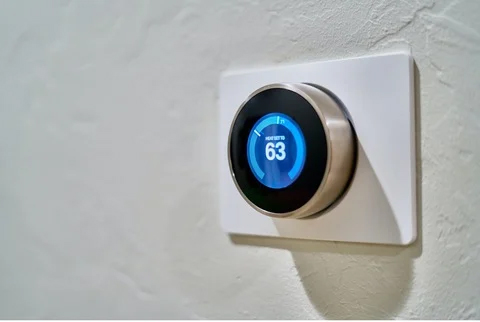Heating, ventilation, and air conditioning account for a significant portion of a building’s total energy consumption – 40% to be precise. No surprise there.
It’s probably the system the house makes use of the most. Always on, with the constant reassuring hum in the background that assures you of clean, comfortable air, either warm or cool as the case may be.
A HVAC consists of several components. There’s the heater, the ventilator, the AC unit, as well as other minor components.
Let’s talk about the thermostat today, signs you need a new one, and how to replace a thermostat. (Hint: you should hire an HVAC service like Triad, it’s complicated).
HVAC Thermostat
This is crucial in controlling your HVAC system, temperature-wise. But like all things, at some point, your thermostat will break down.

Signs that your thermostat needs a replacement
- A blocked sensor or defective wiring in your thermostat could result in your heater or AC not starting.
- Another sign of a bad thermostat is when the AC or heater is constantly running.
- A defective thermostat could result in different temperatures in each room.
For all these scenarios and any other issues you may have with your thermostat, your best bet is to call a professional for a replacement.
How to Replace a Thermostat
Replacing a thermostat isn’t as simple as a typical HVAC maintenance is. Unlike cleaning the filters, this is a bit more technical and requires an expert hand, so you should hire an HVAC service professional.
Below is a quick guide on how the professionals do it –
The first thing your technician will do is to find the electrical panel and switch off power to the HVAC. Safety first.
They’ll also ensure that the new thermostat matches the voltage on your current circuit. Exceeding this level is a potential fire risk.
The old thermostat will be removed with a screwdriver. Then, the wires are disconnected. This is the tricky part. Attempting to do this on your own could result in the wires getting cut or you forgetting the right points of contact.
An expert has a system of safely labeling the wires and their terminals. They also attach it to something to prevent it from slipping back into the wall.
Next comes the installation of the new thermostat base and wires. With pliers, they’ll insert the wires back into the appropriate terminal and lock them in place.
Last is the mounting of the new thermostat. Once this is done, it’s safe to return power to your HVAC.
There are different types of thermostats available such as programmable, non-programmable, Wi-Fi thermostats, and smart thermostats. After installing, program each according to the manufacturer’s instructions and use it for your HVAC.
Benefits of replacing your thermostat
- Replacing your thermostat can significantly lower your energy consumption by optimizing the energy needs of your home.
- Modern thermostats are much easier to use. For instance, upgrading from a non-programmable to a smart thermostat will ensure your home is at the optimal temperature regardless of your location.
- A modern thermostat is likely to be eco-friendly and much safer for the environment.
- Also, replacing your thermostat helps your HVAC work more efficiently and increases its life expectancy.
If you would like to replace our thermostat, reach out to us at Triad Mechanical. We’ve got experts in HVAC service technology to safely replace your thermostat quickly and easily.
More than just an air conditioning company, our technicians are trained to handle all things HVAC service. Beyond replacing your thermostat, we can also take a look at your HVAC unit in general and offer a professional opinion on what you need to do to optimize it.
Reach out to us at Triad Mechanical for more information at our website or by calling 770-682-0075.
